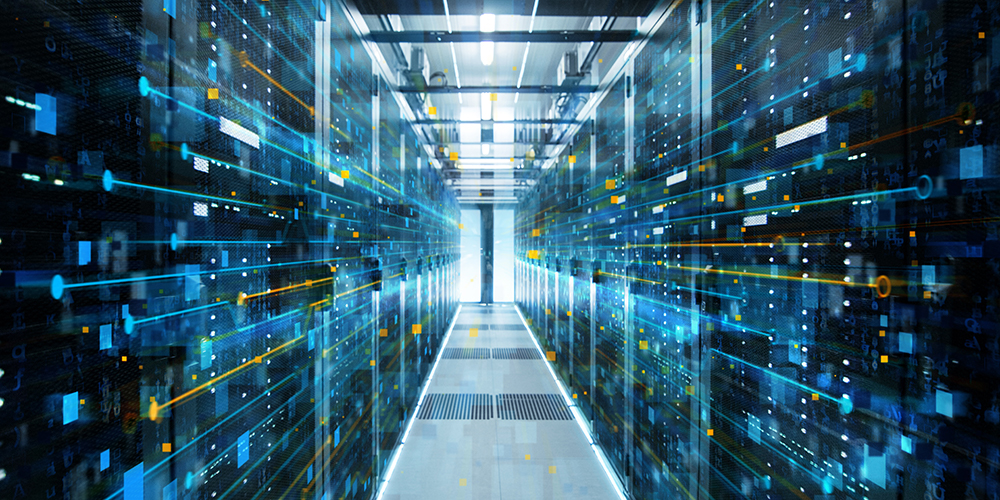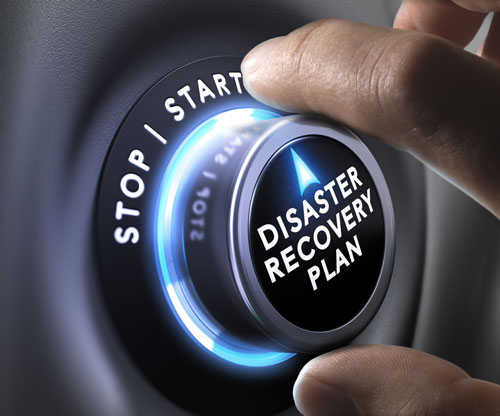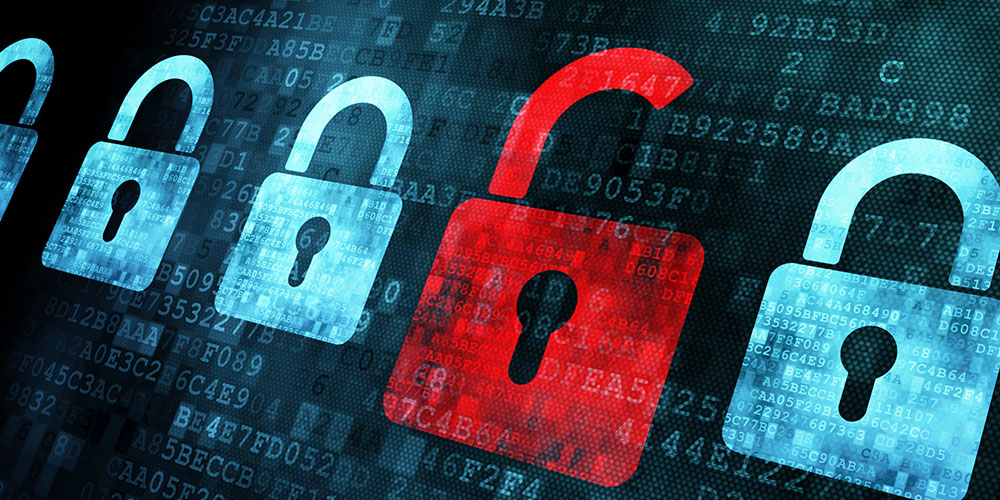
Nov 13, 2018 | SMB Technology, SMB Technology, SMB Technology, SMB Technology, Technology News
Over the last several years, we have heard about high-profile cyber attacks and data breaches. However, large companies are not the only ones subject to such attacks. Small to medium businesses are at risk as well, and may not have the resources to overcome a data breach. According to Forbes, the question is not if a cyber attack will occur, but when. Read on to learn what comprises cybersecurity and why it is so important. What is Cybersecurity? The definition of cybersecurity is “the protection of Internet-connected systems–including hardware, software, and data–from cyber attacks.” It can be thought of as a constellation of equipment and practices designed to keep a company’s data and infrastructure safe from natural and man-made hazards. On the technical side, protections include operating system patches and current anti-virus and anti-malware definitions. Data encryption is another key protection, both on-premise and in the cloud. On the human side, employees need to learn how to protect the company’s data by recognizing attempts by hackers to get into the company’s systems. Phishing schemes are one such way cybercriminals attempt to steal passwords and other data. If an attack happens, employees need to be trained in how to report and escalate it. All of these aspects can make a difference in keeping your business, in business. The Importance of Cybersecurity With cybercriminals becoming ever more sophisticated, and technological innovations such as the Internet of Things developing quickly, there are more points at which a business’s systems and data can be threatened. And what does this mean for your company? If a data breach occurs, customer data can be stolen...

Nov 1, 2018 | SMB Technology, SMB Technology, SMB Technology, SMB Technology, Technology News
It’s about time for businesses to be setting up their 2019 budget and deciding what their IT expenditure will be. According to Forbes, a significant portion of IT budgets will be committed to the cloud. But what option will your business choose? Public, private, or hybrid cloud? And what services are best for your business? IaaS is a popular choice; read on to learn more about this option and its benefits. Infrastructure as a Service and its Benefits Infrastructure as a service is a class of cloud computing wherein the consumer can provision fundamental computing resources over the Internet without having to manage or control the underlying cloud infrastructure. They reap the benefits of cloud computing–broad-based networking access, rapid elasticity, scalability, and on-demand access–without having to manage and update on-site infrastructure. The consumer enjoys cost-saving benefits because the utility-based pricing allows them to use as much or as little of the computing resources as needed. CAPEX vs. OPEX With Infrastructure as a Services (IaaS) and the Cloud Computing Model, the capital expense of managing and controlling on-site infrastructure is converted to an operating expense. According to COMPTIA, IaaS has technical, operational and even competitive benefits for small and medium-sized businesses. But how do you know if IaaS is right for your business? Is IaaS Right for Your Business? This particular class of cloud computing may be just right for your business, and a good first step is assessing which of your business needs that IaaS can satisfy. If your business is small and has a limited IT budget, you pay based on what resources you use. With the infrastructure...

Oct 16, 2018 | SMB Technology, SMB Technology, SMB Technology, SMB Technology, Technology News
Since 2008, the cryptocurrency Bitcoin has been in the news. Not only that, its underlying technology called Blockchain has become better known as an emerging technological trend. According to a COMPTIA brief citing research by Gartner, this technology is expected to grow in 2018 and beyond, with blockchain spending to reach a project $20 billion in 2024 and 2025. Is Blockchain for your business? Read on to learn more. More Than Just Cryptocurrency In an article in the Los Angeles Times from earlier this year, blockchain was tested by a major retailer in an effort to prevent further outbreaks of foodborne illness from contaminated produce. In a pilot test of the emerging technology, it was found that the path of a product through the supply chain could be tracked, from farm to shelf, and at all points in between. The tracking took only seconds, in contrast to the usual process which takes nearly a week. What is Blockchain? The definition of blockchain is “a technology that uses encryption to link a continuous series of records.” Instead of the data being centrally located or else not being trackable at all, it is distributed among multiple users, all of whom have access to a “distributed ledger” of actions on the data. Each participant has their own piece of the data and is connected to each of the other participants. This new technology, which we are hearing more about in 2018 and beyond, can help participants reach consensus while keeping data secure. For many businesses, blockchain has the potential to streamline daily business processes while ensuring compliance to cybersecurity regulations. The Role...

Oct 9, 2018 | SMB Technology, SMB Technology, SMB Technology, SMB Technology, Technology News
With the holiday season coming up soon, many businesses, both brick and mortar and online, will process a great deal of customer credit card information. This information will be stored and transmitted and must be protected from loss or compromise. The Payment Card Industry Data Security Standard (PCI-DSS) is the standard for compliance and is important year-round. Is your business compliant? If not, how can your business reach that standard? Read on to find out more about this important issue. Not Just a Compliance Issue According to a COMPTIA resource, compliance is connected with overall network security. If your business is security-minded, then compliance is a natural next step. Many retail companies must protect their customers’ credit card payment information, and PCI-DSS is a common-sense standard based on good IT security practices. With the possibility of a data breach being very real, having a strong network security policy is a must. Security is part of the operational risks of a business, and PCI-DSS compliance lessens the risk of lost or compromised data. The Human Element in Compliance Not only should the business’s technological components be able to meet the standard, but employees should know best practices for keeping customer financial data safe. With companies providing devices for employees, as well as the Bring Your Own Device (BYOD) initiatives in many companies, mobile security is an important aspect of complying with PCI-DSS. The COMPTIA guide cites the Ponemon Institute’s finding that 62% of lost or stolen devices contained sensitive corporate data; lagging behind at just 39% is the percentage of businesses with security in place. Employees trained to follow the...

Sep 17, 2018 | SMB Technology, SMB Technology, SMB Technology, SMB Technology, Technology News
With so many potential hazards–natural and man-made–that can disrupt your business, now is the right time to develop and implement a disaster recovery and business continuity plan. Not only can floods, fires or earthquakes disrupt daily life, they can interrupt your business for extended periods of time. Also, data can be lost and compromised due to cyberattacks or human error. Businesses that suffer a data loss run the risk of going out of business. A key component of disaster preparedness and recovery is backup– making sure your company’s data is stored and accessible. Read on to learn about the role of backup in keeping your business in business. Backup is All About Recovery The purpose of keeping your company’s data backed up is to be able to access it if business operations are interrupted, whether by a natural disaster or a system breakdown. While there are on-premise methods of backup, such as collation or putting the data on tape or disks, many businesses look to the cloud to keep their data available. That way, when on-premise systems are down, files and applications can be accessed without interruption. Consider Mission-Critical Systems First What are the functions your business uses most often? How much downtime can your system handle? Are unified communications (phone and email), or collaboration (file sharing, for example) key components of your business? What about customer databases associated with e-commerce? Make sure to back up those applications and their associated data first. Such applications are best distributed among multiple network backbones, and in geographically diverse data centers. This redundancy can allow one system to take up where another...

Sep 6, 2018 | SMB Technology, SMB Technology, SMB Technology, SMB Technology, Technology News
With daily business processes as well as innovative new technologies like the Cloud Computing, keeping your company’s data and systems safe is a top priority. Damages from cybercrime, in the form of lost revenue, continue to mount; in the next few years, the cost could reach as much as $6 trillion a year. In daily business activities, companies gather, store and use a great deal of customer data. Employees, thanks to Software as a Service (SaaS), can now work anytime, anywhere, accessing company data from outside the office. Both your technology and your employees need to be ready for multiple threats to the security of your network. Read on to learn more about how to protect your business’ revenue and reputation and keep the business running smoothly. Knowing and Guarding Against Cyber Threats Cyber threats come from both inside your company and outside and can affect businesses of all sizes. Not only can malware and viruses attack your system and steal and/or destroy company data, lack of understanding of threats by employees can compromise the safety of your systems. Be sure to have the latest definitions of your anti-virus and anti-malware definitions up to date. Along with these protections, establish a culture of security. This should work from management downward and emphasize that everyone has a role in keeping your systems safe and your business productive. Keep an Eye on Your Network Another way to keep your business running smoothly is to monitor your network. Network monitoring can be done off-site, 24 hours a day, and can spot and eliminate threats to your security. It can keep even small...







